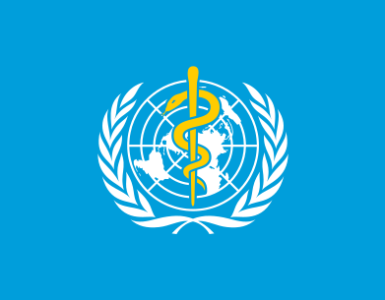As one of the tropical world’s most pernicious pathogens, the dengue virus is responsible for millions of infections and thousands of deaths each year. Now, researchers have made new discoveries about dengue epidemics in Nicaragua, which could redefine how scientists understand immunity against this virus.
The results contradict the conventional wisdom that people can become immune to dengue virus for the rest of their lives after repeated infections. Instead, the models suggest that immunity is more temporary in adults, and that it wanes in a population over time until the next outbreak appears.
The researchers surprisingly found that the 2015-2016 Zika virus epidemic seemed to delay the next wave of dengue in Nicaragua. That discovery indicates that immunity to the closely related Zika virus also can shape and delay dengue outbreaks on broader scales.
The new findings, which involved data from more than 4,400 people in Nicaragua, were published in the November 15 issue of Science Translational Medicine.
“Our study thus challenges a basic assumption about immunity to dengue viruses, suggesting that immunity isn’t lifelong after two infections — immunity is likely maintained because people continue to get re-exposed to dengue viruses, which helps keep their antibodies high and helps protect them from disease,” said Leah Katzelnick, a researcher at the United States’ National Institute of Allergy and Infectious Diseases and senior author of the new study.
“This suggests dengue is less like measles, which induces long-lived protection, and may be more like influenza, COVID-19 or malaria,” she said. “This changes how we think about vaccination against dengue.”
Mismatch between models and real-word epidemics
Dengue virus is the most common virus transmitted by mosquitoes. It infects a staggering 390 million people worldwide each year and causes noticeable symptoms in about a quarter of them, according to the World Health Organization website.
Dengue disproportionately impacts developing and tropical countries, being endemic in more than 100 nations throughout the Americas, Africa, Southeast Asia and the Middle East. Although 70% of cases are in Asia, countries such as Nicaragua in Central America also experience endemic transmission.
Some countries affected by dengue, such as Thailand, report that outbreaks tend to have a cyclical nature, with notable peaks of reported cases. Scientists have therefore developed many different models of disease transmission to try to predict dengue outbreaks.
These models have linked cycles of dengue outbreaks to environmental factors including mosquito ecology and geography, as well as biological variables such as immunity from previous dengue infections. The latter includes an unusual phenomenon called antibody-dependent enhancement, which happens when having antibodies against a virus actually worsens future infections.
However, models based solely on antibody-dependent enhancement don’t yield predictions that match real-world case data from dengue outbreaks. Similarly, many dengue models assume that people gain lifelong immunity to dengue after having at least two infections with different subtypes of the virus. But these modeling predictions don’t fully line up with real-world circumstances either.
“There are still many gaps in our knowledge about the immunology of dengue, including how long protective immunity lasts,” Katzelnick said.
“It is thus important when we learn something new about the immunology of dengue to explore how that can help explain dengue outbreaks and in turn, use patterns in dengue outbreaks to better understand the likely biology of dengue,” she added.
Waning immunity in adults may drive outbreak patterns
Katzelnick and lead author Rosemary Aogo, a postdoctoral research fellow at the National Institute of Allergy and Infectious Diseases, led a team of scientists on a journey to solve this conundrum in dengue epidemiology.
The scientists first gathered data on anti-dengue antibodies in blood samples from 4,478 children and adults in Nicaragua from 2017 to 2021. They made sure to pay careful attention to the data from adults in endemic areas, who tend to be studied less than other groups.
Eventually, the scientists made a surprising discovery: immunity against the virus waned even in adults who had likely been infected with dengue multiple times. The number of antibodies that bind to the dengue virus also rose in these adults during a large outbreak of dengue in 2019, even though these people would be expected to have enough antibodies to protect them from infection.
The waning of these antibodies closely tracked with dengue outbreaks in the country, which led Katzelnick’s team to further explore whether immunity in adults might be shaping the disease’s epidemiology.
Leveraging their data from Nicaragua, the scientists designed and built a new epidemiological model based on a “susceptible-infected-recovered-susceptible” framework.
Most existing dengue models predict epidemics by dividing a population into those who are susceptible, the infected and those who have recovered. But the new model also includes a fourth group of people who again become susceptible to infection at some point after recovering.
Unlike past models, the new framework doesn’t assume that immunity is lifelong. The new model also tracks dengue immunity in a population by the number of anti-dengue antibodies, rather than solely relying on previous case data.
The team’s new model provided predictions of dengue outbreaks that overlapped well with real-world data from Nicaragua’s outbreaks from 2017 to 2021. It also captured some of the peaks and troughs in the disease’s dynamics that didn’t appear when the team also applied more traditional models.
“Many in the dengue field, including us, had assumed that individuals had lifelong protection against dengue after two dengue virus infections,” Katzelnick said. “But our model suggests that waning and boosting in already highly immune adults is important to explaining the oscillations in epidemics we see in Nicaragua and possibly elsewhere.”
Nicaragua also experienced a surge in cases of the Zika virus during the 2015-2016 Zika epidemic in South and Central America. Because Zika is closely related to dengue, the scientists explored whether this epidemic had any impact on the country’s typical dengue outbreaks.
The scientists found that the Zika epidemic boosted levels of anti-dengue antibodies against dengue, which may have led to a large dip in cases of dengue for several years after 2016. However, they calculated that Zika also generated antibodies that later increased the risk of dengue and may have eventually fueled a resurgence of the virus in 2019.
Having discovered these surprising patterns, the scientists also discuss how their findings could carry implications for how researchers plan out vaccination campaigns for dengue virus.
There’s currently one licensed vaccine for dengue, named Dengvaxia, and five other vaccine candidates are in development, according to the World Health Organization. However, most people living in endemic areas remain unvaccinated, and Dengvaxia isn’t recommended for people who haven’t yet been infected.
The results from the new study suggest that vaccination might not be a “one-and-done” approach, Katzelnick said. Rather, authorities may need to plan for repeated boosters of these emerging vaccines in adults to maintain immunity in a population.
However, the scientists caution that because their study only looked at antibodies, they didn’t capture the complete picture of how the immune system responds to dengue. They plan on testing whether other dynamics of immunity could help refine their models of viral transmission, as well as applying their model to understand the epidemiology of COVID-19 and other infectious diseases.
Source: American Association for the Advancement of Science (AAAS)

















